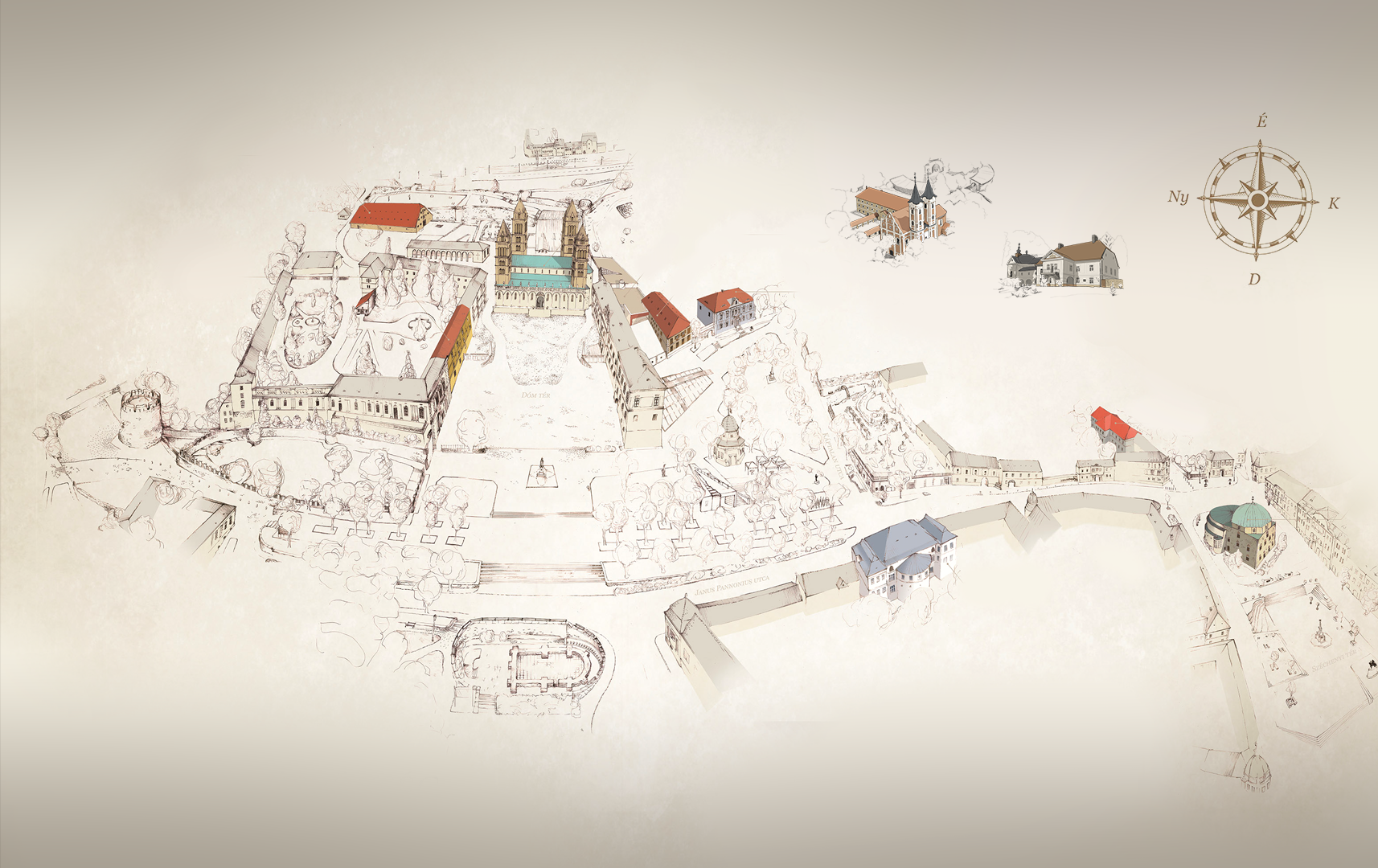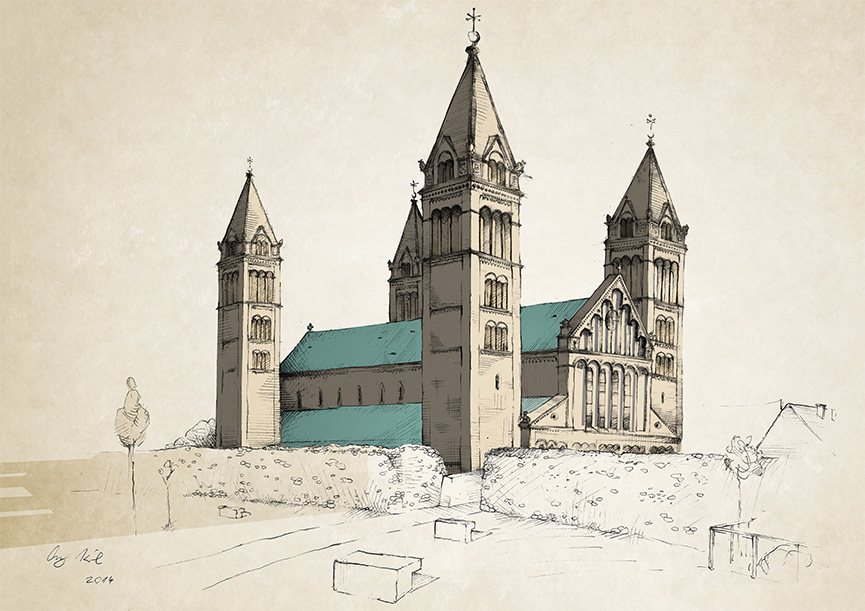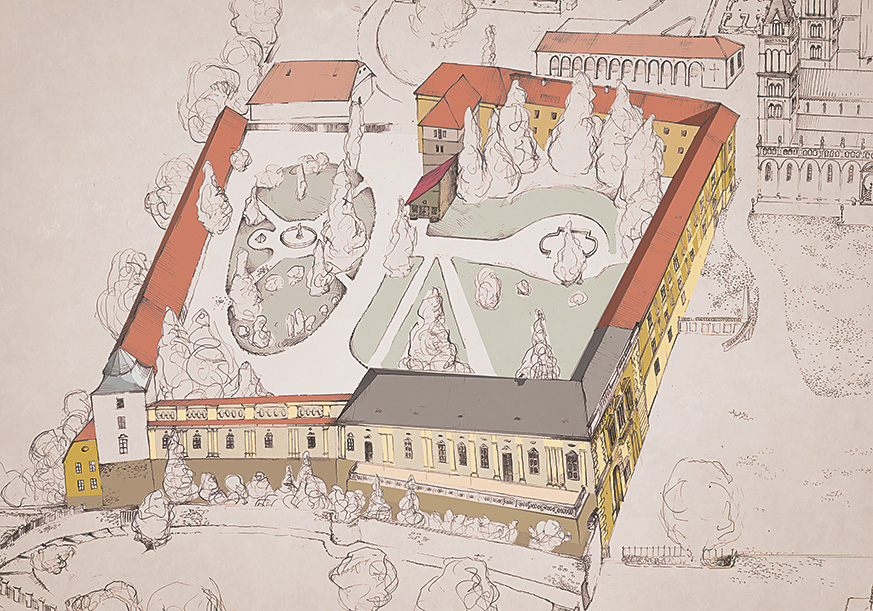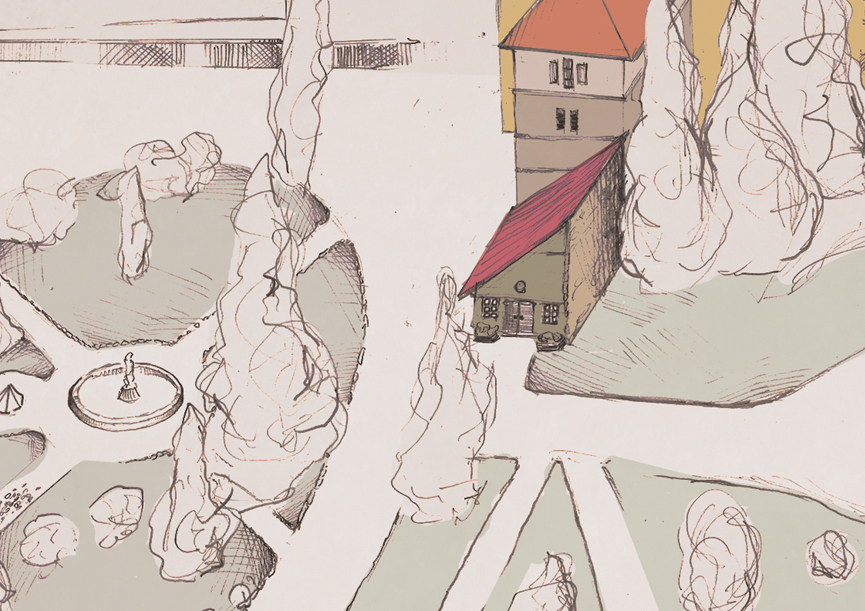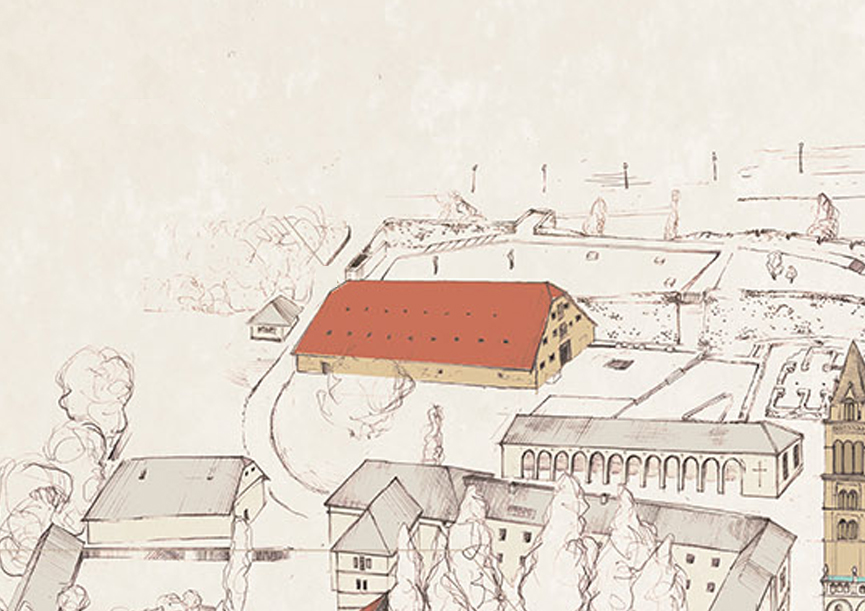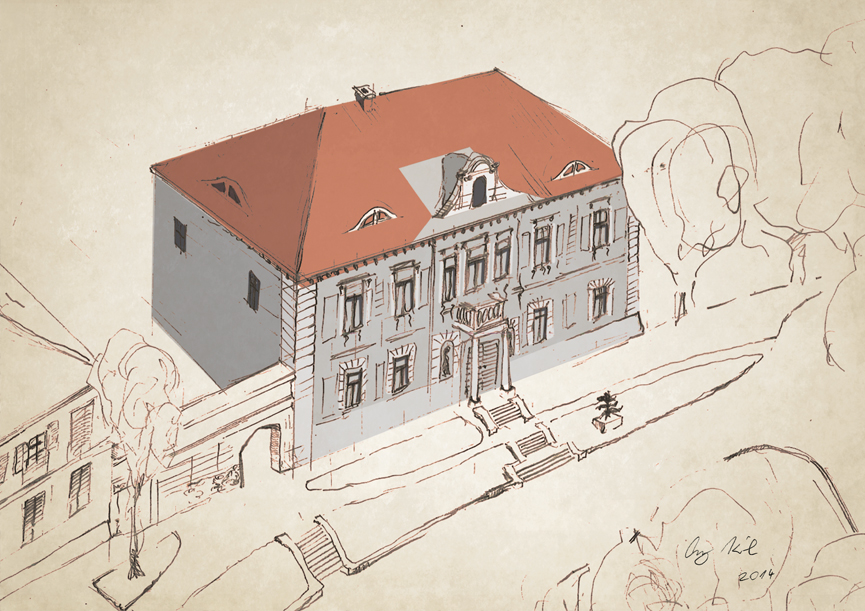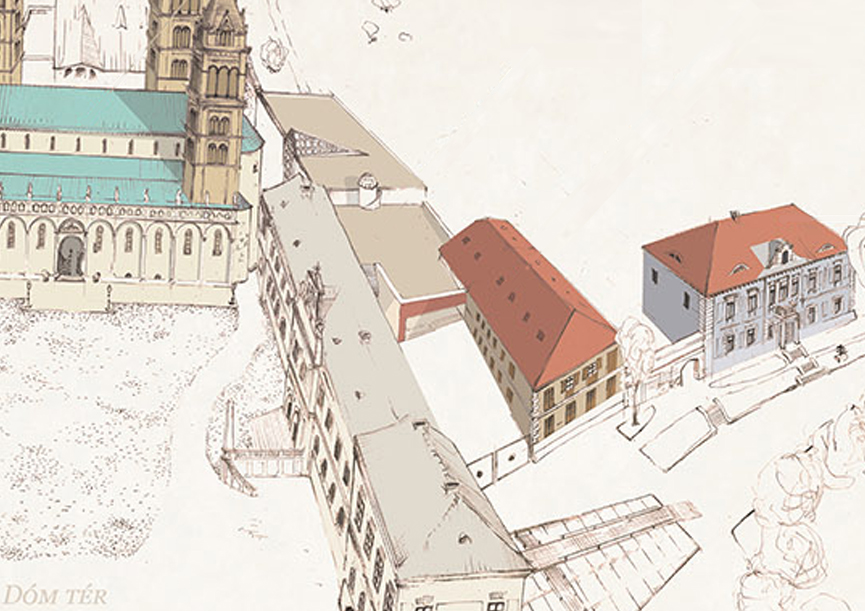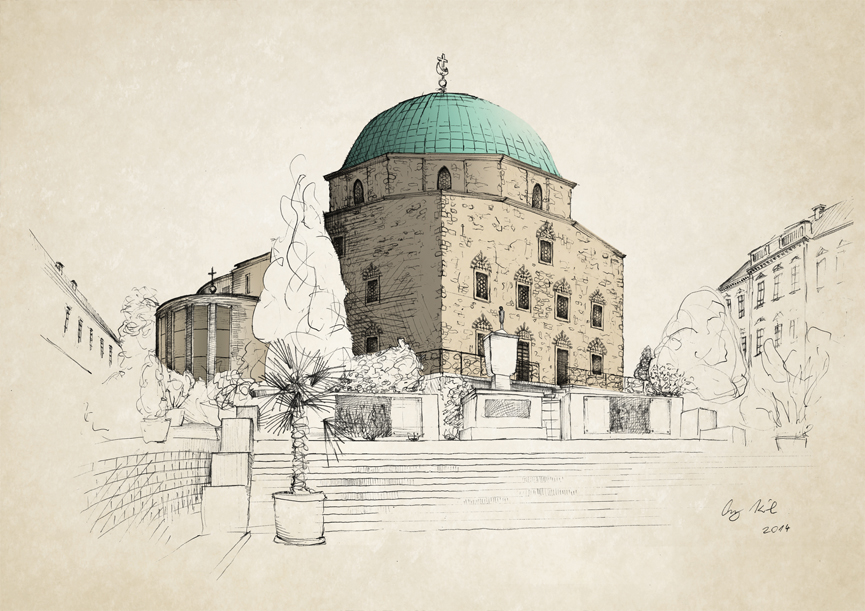Tourist map
The Cathedral
The Cathedral of Saint Peter and Saint Paul took its current form during the reconstruction works carried out in the 19th century; however, the transformation has kept the magical atmosphere of the medieval cathedral. In its chapels, the world-famous seccos of Károly Lotz and Bertalan Székely can be admired. The tomb of Janus Pannonius, a Humanist poet and Bishop of Pécs, can also be found in its five-nave, Romanesque crypt. There is a stunning view of the city from the south-eastern tower of the time-honoured building, which has preserved the spirit of its thousand-year-old past so well.
The Episcopal Palace
In the fundamentally 12th-century Palace, we can get a glimpse of the episcopal offices and drawing rooms that have evolved in style over the ages. With their uniquely decorated furniture, paintings and accessories, the rooms clearly demonstrate the life and times of many bishops who have occupied them.
The “Secret passage” – the underground Church
The ‘Secret passage’ is a tunnel that connects the garden of the Episcopal Palace with the Cellar and the Granary. It has had a variety of uses, including a wine cellar. It also served as a secure path at the time when the agents of the Communist Government installed numerous bugging devices in the episcopal residency and its gardens. A tunnel with such a significant past is a truly exceptional environment to animatedly demonstrate the dark and dangerous days of Communist religious persecutions.
The Episcopal Wine Cellar
The 18th century wine cellar used to form part of the contemporary episcopal residency and was known as the “main cellar” of the demesne. Visitors today may see its wine-making exhibition and enjoy a wine tasting experience..
The Episcopal Treasury
The fine art exhibition houses unequalled pieces of art, previously only accessible to view by a privileged few for decades. They include paintings, graphics, etchings, sculptures, objects of gold- and silversmiths and numismatic relics of the episcopal collection of the Diocese of Pécs..
The Lapidarium
The Lapidarium of Pécs houses the most prominent national Romanesque sculpture collection, especially carvings from the medieval Cathedral.
The Mosque of Pasha Gazi Kassim
The Parish Church of the Purification of the Blessed Virgin in the city centre of Pécs is an incomparable Ottoman monument of our country; it is the most important example of Turkish-Islamic architecture in Hungary. When visitors enter the church, considered to be a symbol of Pécs, they will wander around in a building where East meets West, a sacred picturesque place where different religions interact.
Püspökszentlászló
The history of the village dates back to the century following Ottoman rule, when Pál Eszterházy, Bishop of Pécs, built a church and summer residency in the deserted locality. In its eventful history, in the year 1955, under state socialism, József Mindszenty, the most famous martyr of communist dictatorship, was held in captivity for a while in the holiday home of the episcopate. The mansion and the church have gone through complete renovation, with accommodation created for the pilgrims visiting the village. The renovated mansion, with its remnants and relics, is open to the public.
Máriagyűd
The history of Máriagyűd dates back to the 12th century. King Géza II built its first church in 1147. The village came into full bloom in the 18th century, when it became the Baranya county centre of the Cult of the Virgin Mary, revived during the Counter-Reformation. The Virgin Mary statue of the church is from 1712. Due to the documented miraculous healings occurring here, Pope Pius VII declared Máriagyűd an official pilgrimage site in 1805. A Calvary was built on the hill, the embossed ceramic devotional images of the Stations of the Cross provided by the Zsolnay Porcelain Factory in Pécs. A row of leafy horse chestnut trees leads to a retreat named after Our Lady of Hungary.
